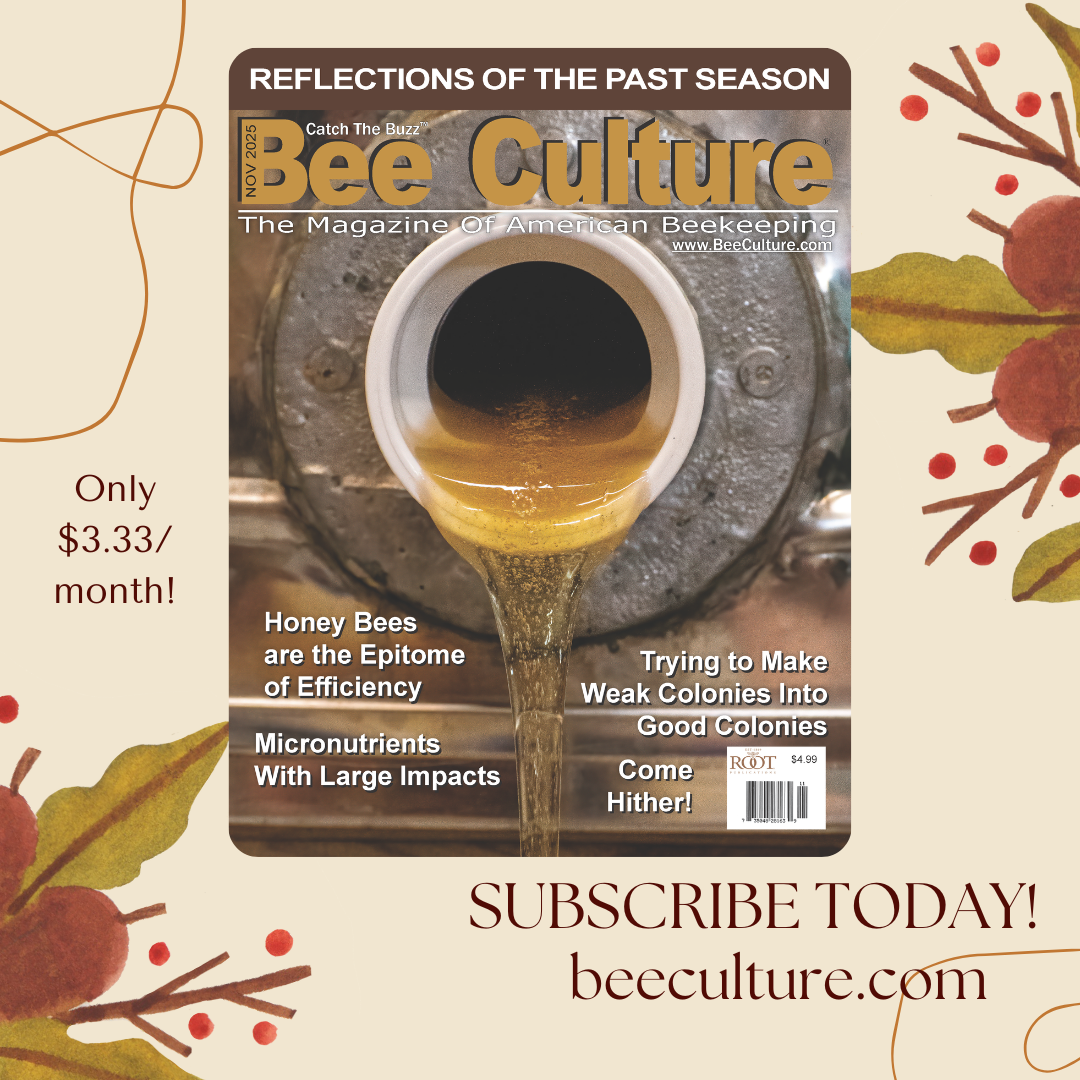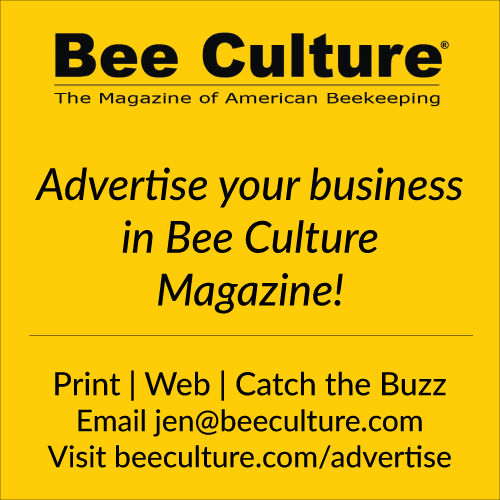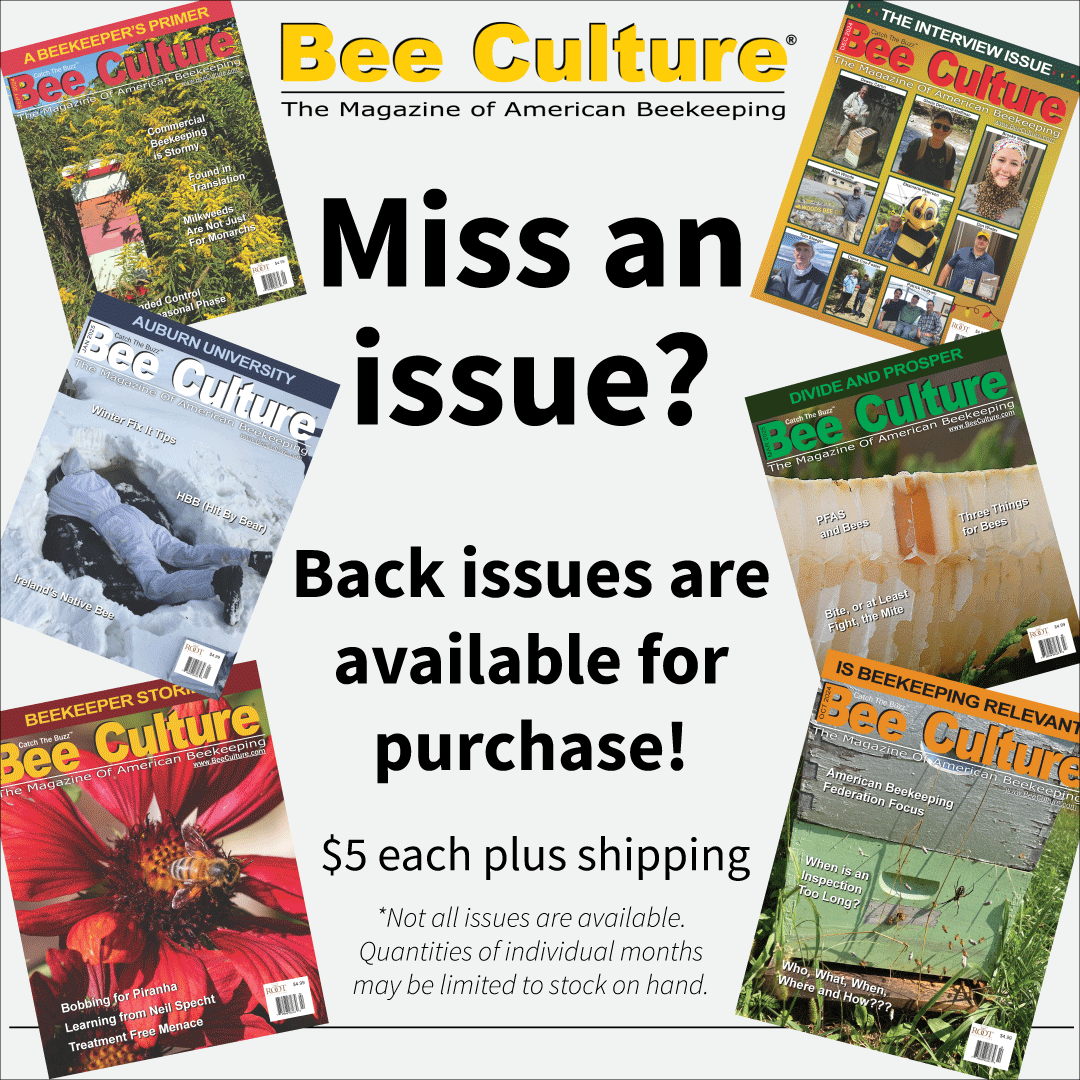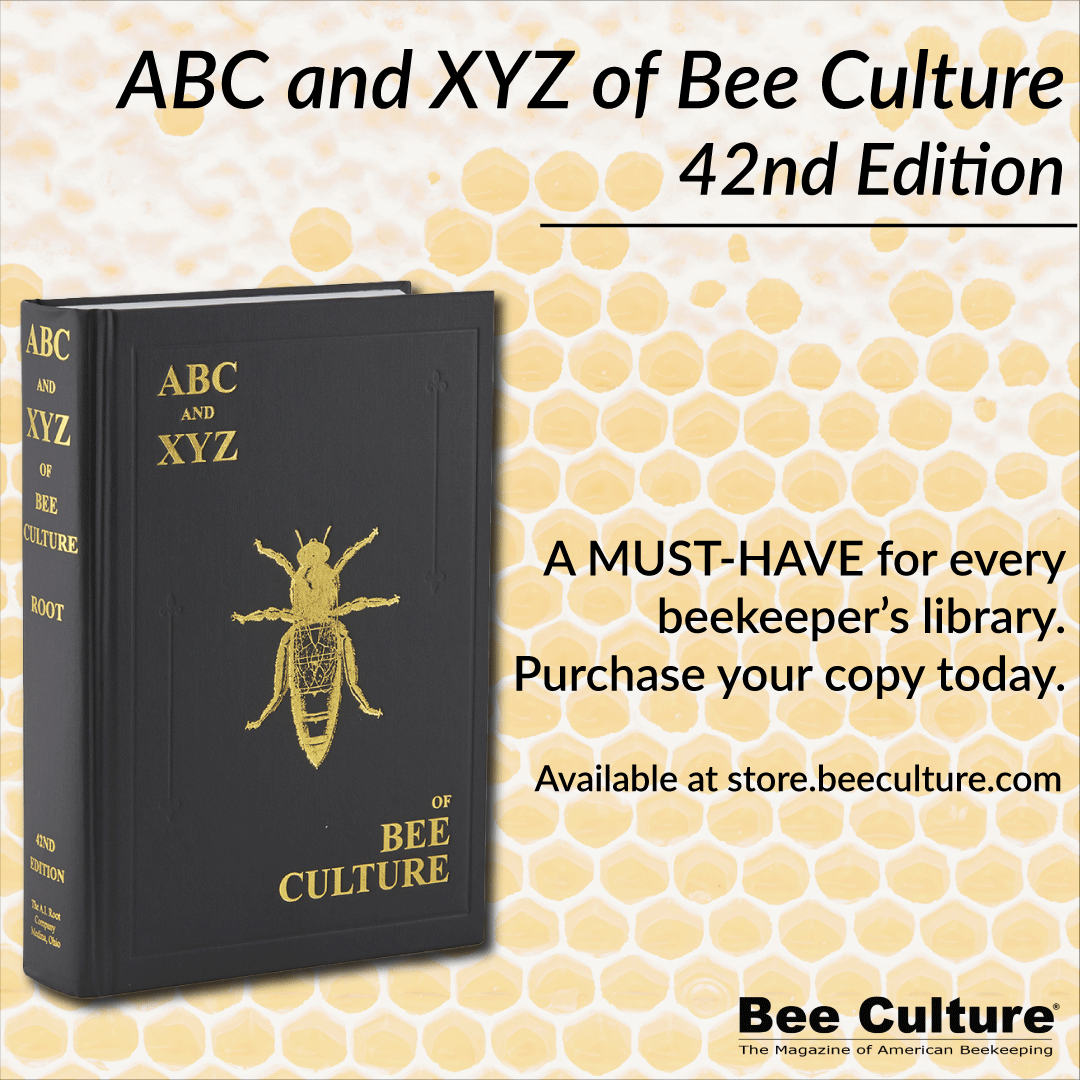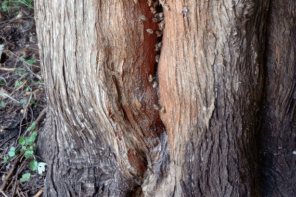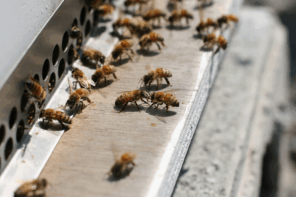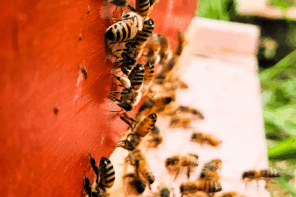By: Les Eccles
This article originally appeared in the Winter 2018 issue of BEEKeeping Your First Three Years
Most beekeepers we have spoken to this year have been reporting a good honey harvest, which is very welcome news after the dismal honey crop of 2013. Bees also seem to have built good brood, and splits have come along to provide healthy populations for overwintering. Now that we have made it to the time of year to harvest the remainder of the honey crop we have farmed, it is time to look at how we need to feed our livestock to ensure they have consistent, nutritious and plentiful food stores to make it through a long Fall, Winter and Spring.
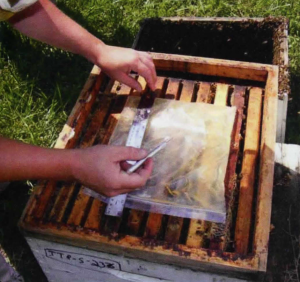 Although we could be blessed with a “late” Fall with flowers in bloom, it is rare that colonies are able to store excess food past the middle of September. The honey left in the brood chambers after harvest is usually enough to last a colony a short time into late Fall, however beekeepers feeding colonies should take place much sooner in order to ensure colonies have time and environmental conditions to store all of the resources necessary to make it through the rest of the overwintering period. Beekeepers will debate the method and exact date of when you should begin feeding. The method however, is largely what dictates of feeding how early or how late you can feed colonies. This article will discuss different overwintering options and what the benefits are to each.
Although we could be blessed with a “late” Fall with flowers in bloom, it is rare that colonies are able to store excess food past the middle of September. The honey left in the brood chambers after harvest is usually enough to last a colony a short time into late Fall, however beekeepers feeding colonies should take place much sooner in order to ensure colonies have time and environmental conditions to store all of the resources necessary to make it through the rest of the overwintering period. Beekeepers will debate the method and exact date of when you should begin feeding. The method however, is largely what dictates of feeding how early or how late you can feed colonies. This article will discuss different overwintering options and what the benefits are to each.
Before feeding begins, there is a choice to be made on the type of feed you will use. It is strongly encouraged that sucrose be purchased over other options such as high fructose corn syrup (HFCS). Sucrose based sugar syrup has been shown to be the most consistent supplement to ensure the honey bees have the carbohydrates needed to keep the cluster warn in the Winter, and encourage colony build up in the Spring. HFCS, although cheaper, has been shown to form a toxin, hydroxymethylfurfural (HMF), that can increase honey bee mortality rates and colonies fed HFCS do not seem to build as strong populations in the Spring when compared to sucrose.
Although honey may seem to be the logical and healthier feed to leave colonies, some thought needs to be put into this to understand why it may not be the best option for overwintering colonies. What it comes down to is providing consistent feed to the bees to achieve consistent overwintering. Every season is different in the nectar source and conditions available for colonies to collect nectar from various flowers; this also means that the natural honey left for a colony overwinter will vary in source, quality and quantity every year. This is important to consider because there are some honeys that, given certain conditions, do not provide honey bees with the sugars and energy needed to successfully make it through the Winter. For example, Fall floral sources, such as aster honey, crystallize quickly in the comb. If Winter temperatures do not allow honey bees to access water to liquefy this honey they could actually starve, even though there is an abundance of honey in the comb. The other point to consider is that there are components in honey that are not digestible by honey bees, resulting in increased defecation, which has the potential to increase the rate of disease spread in a colony. Correctly feeding overwintering bees is one of the most important aspects that differentiate “having bees” from “keeping or farming” bees, by reducing their risks from nothing more than exposure to the natural elements of their environment. This is not much different than farming cattle by providing healthy feed over the Winter rather than forcing them to stay outside to forage on the limited resources under the variable condition of that season and hoping for the best.
Overwintering colonies require about 15 liters of supplement syrup to achieve the desired overwinter colony weight of approximately 45 kg. This has been shown to be the optimal weight to significantly reduce overwinter mortality due to starvation. This amount is also based on Ontario stock that has been bred for an optimal Winter cluster of about eight frames of bees. Older varieties of bees such as Italian honey bees that had much larger Winter clusters, required more food reserves over Winter and is the origin of why Ontario beekeepers overwintered the majority of colonies in double brood chambers. Current Ontario honey bee stock in most regions are now equally able to overwinter with food stores in a single brood chamber.
Hive Top Feeders
Top feeders are probably the most traditional form of feeding colonies. This consists of providing a container of sugar syrup on the top-bars of brood chambers to give bees easy access to feed that requires minimal environmental conditions to allow for foraging and storage. Honey bees generally need external temperatures above 13 degrees C to forage for food outside of the colony. However, when a feeder is placed on top of a colony, the bees can use the temperature released from inside of the colony to move to the feeder and collect the feed to bring it back and store in the brood chamber. The advantage to this over barrel feeding is that if environmental conditions in the Fall are too cool or wet for foraging, the colony can still access the feed from a hive top feeder to complete their Winter stores. The disadvantage is that it requires more time to feed colonies individually and may require refilling if the feeders used cannot hold the required amount to fill a brood chamber.
Barrel Feeding
Barrel feeding is a relatively recent option for feeding colonies and is generally favored by beekeepers that have larger numbers of colonies and require more time and labor to feed individually. This method simply requires calculating the amount of syrup needed to feed a whole beeyard and placing bulk amounts of sugar syrup outside of the hive in large containers (usually barrels) that allow the colonies to rob the syrup from these containers and bring it back to the hive to store. Because one barrel of sugar syrup generally holds 150 liters, and a colony requires 15 liters of feed; one barrel is enough to feed 10 colonies.
The advantage to barrel feeding is that it requires only one trip to the bee yard to drop off the feed, open the containers and put straw or alternate material on top of the syrup in the containers for the bees to crawl on and access the feed. Although this requires more effort by the foragers to compete and rob this feed, resulting in dark, hairless, worn out bees, some beekeepers claim that this is a good thing because these are the oldest bees in the colony and is a method of ensuring they do not live too long into the Winter and use resources that should be saved for the younger workers that will rejuvenate the colony in the Spring. The disadvantage to this is method is that if it feeding is delayed in the Fall or the conditions are poor for foraging, the colony can run out of time to obtain this feed and store it properly. Another disadvantage that is not often discussed is that if disease is an issue in a bee yard, barrel feeding encourages mass congregation of feeding in one location, allowing for increased risk of disease spread between colonies. The saving theory in this biosecurity hazard is that the diseases that we would be concerned about spreading i.e. Nosema and American Foulbrood, are not of concern in the survival of overwintering colonies, however precautions should be taken the following Spring to monitor the potential development of disease originating from barrel feeding the previous Fall.
Despite which option you use to feed your colonies, there are environmental conditions that can hamper feeding management that are mostly out of the beekeeper’s control. Low temperatures that prevent the collection and conversion of supplemental feed into stored honey is one that can usually be avoided by early feeding, starting no later than late September in most parts of Ontario. However, a humid Fall combined with low temperatures can cause another issue by reducing the ability of a colony to lower the moisture content of the feed, which can result in fermented honey stores. This will cause digestive issues in honey bees, with diarrhea symptoms that are often confused for Nosema infections in the Spring.
From my personal experience working with honey bees in different regions of the Americas, feeding is probably the most diverse management practice that requires taking into account environ-mental differences, types of honey bee stock used, flowering Seasons and overall beekeeping goals. We only have one chance per year to get feeding right, so gaining experience to improve feeding management is slow and demands a lot of consideration.
Les Eccles, B.Sc, is the Tech-Transfer Program Lead
Reprinted with permission from The Ontario Bee Journal Special Edition 2014/15


